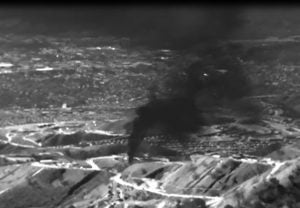The secret sauce for preventing another Aliso Canyon-sized gas leak in California
 More than a year and a half after the Aliso Canyon natural gas storage facility caused more than 100,000 tons of methane to leak into the atmosphere – amounting to be our nation’s largest-ever gas leak, California regulators continue to labor away at improving the rules that could prevent another gas storage disaster.
More than a year and a half after the Aliso Canyon natural gas storage facility caused more than 100,000 tons of methane to leak into the atmosphere – amounting to be our nation’s largest-ever gas leak, California regulators continue to labor away at improving the rules that could prevent another gas storage disaster.
That leak was a wake up call to regulators around the country charged with protecting workers, people and the environment from gas storage facility accidents.
In early 2016, California implemented some “emergency” standards for the state’s gas storage facilities, and is currently in the process of developing a more permanent solution through a rulemaking with the Division of Oil, Gas and Geothermal Resources (DOGGR), which just wrapped up its public comment period.
It is widely accepted that more oversight and smarter management of gas storage facilities can go a long way to prevent another disaster from happening. Adopting a few key improvements to the leading standards in the current rulemaking will give California the most robust, protective gas storage regulatory program in the United States.
A smart and successful natural gas storage program must include proper risk management and emergency response planning. That’s a lot of the secret sauce right there. These plans should outline the risks each facility faces, the practices and procedures for reducing those risks, and the playbook for dealing with problems. If California gets that right – along with a number of targeted rules on well integrity, monitoring and maintenance — the state will be in good shape to deal with whatever lies ahead.
California can and should be a leader on gas storage regulation in the United States. Many jurisdictions, the federal government included, are looking closely at their gas storage rules in the wake of the Aliso Canyon disaster, and California’s experience will have a huge impact on how this issue is handled at the 400+ gas storage facilities around the country. If California gets this right, it will help reduce safety and environmental risks from gas storage nationwide.










